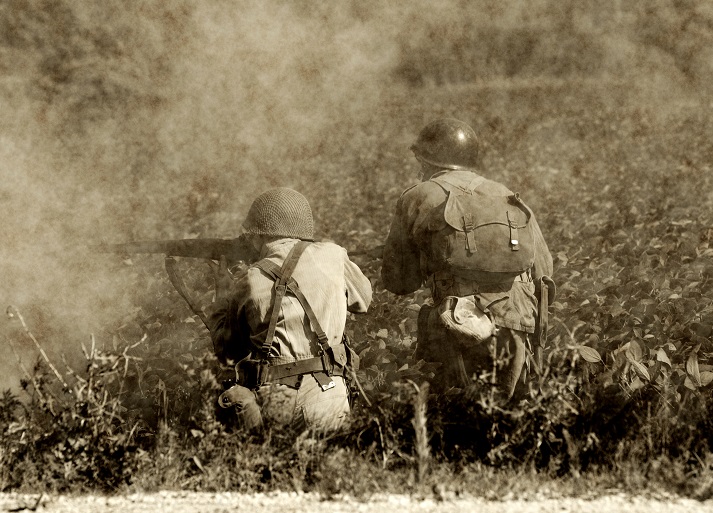


Field artillery and even anti aircraft artillery units created their own artillery battle groups. Finnish battle groups were relatively short period ad hoc but very common phenomena especially in 19. For few days regiment commander had more firepower under his command than ordinary infantry division commander. For instance in June 1944 Battle group (Taisteluosasto) Ehrnrooth (commander of 7th Regiment) consisted: I/7th Regiment, III/7th Regiment, III/6th Regiment (minus its 9th inf company), fortification battalion 4, II/field artillery Regiment 19, light field artillery battalion 24, heavy artillery battalion 20 and heavy artillery battalion 27. In many cases there were several units of different regiments, brigades and divisions in same battle group.

In the Continuation War (1941–44) battle groups (Finnish: taisteluosasto) were commonly used by Finns and were now bigger having not only infantry but artillery and anti-tank units under commander of battle group. However, given the poor equipment of the Finnish forces, the combined-arms aspect of the Kampfgruppen could not have been applied. With respect to their ad hoc nature and objective-oriented strategy, Finnish ski troops employed during the Soviet- Finnish Winter War of 1939-1940 could, in principle, be considered to be an equivalent to Kampfgruppen. Other armies have also used the term "assault troops", " shock troops" or fire teams for specialist soldiers who perform the infiltration tasks of stormtroopers. Men trained in these methods were known in German as Sturmmann (literally "assault man" but usually translated as Stormtrooper), formed into companies of Sturmtruppen (Storm Troops). The Stormtroopers (in German Stoßtruppen, shock troops, literally "punch/push troops") were specialist military troops which were formed in the last years of World War I as the German army developed new methods of attacking enemy trenches, called " infiltration tactics".

Kampfgruppen were generally referred to by either their commanding officer's name or the parent division. Ī Kampfgruppe could range in size from a company to a corps, but the most common was an Abteilung ( battalion)-sized formation. “I mean, 635 straight days of nonstop combat, my service can’t compare to what he’s done.”Ĭostanza also cites one of Nelson’s several displays of valor when reminiscing on the type of soldier he was.The Kampfgruppe was an ad hoc combined arms formation, usually employing a combination of tanks, infantry, and artillery (including anti-tank) elements, generally organised for a particular task or operation. “I’ve served five tours in Iraq, but I never saw combat like he saw,” says 3rd Infantry Division Commander Charles Costanza. Now, Nelson serves as the golden standard for those who serve. During his time in combat, Nelson was part of six different amphibious invasions and at one point served in 635 consecutive days of nonstop combat. Nelson also participated in Operation Husky in Sicily, and operations Avalanche and Shingle in Italy following the invasion of Northern Africa. Serving in World War II with F Company, 2nd Battalion, 7th Infantry Regiment, 3rd Infantry Division, Nelson was part of Operation Torch in Morocco, an Allied mission intended to draw Axis forces away from the Eastern Front in northern Europe. Nelson is a 107-year-old Colorado World War II veteran who also earned two Purple Hearts for his valor in combat. 1st Class Harold Nelson received the Army’s second-highest honor, the Silver Star, at Fort Carson on Tuesday. (KKTV) - Roughly 80 years after his service in World War II, Sgt.


 0 kommentar(er)
0 kommentar(er)
